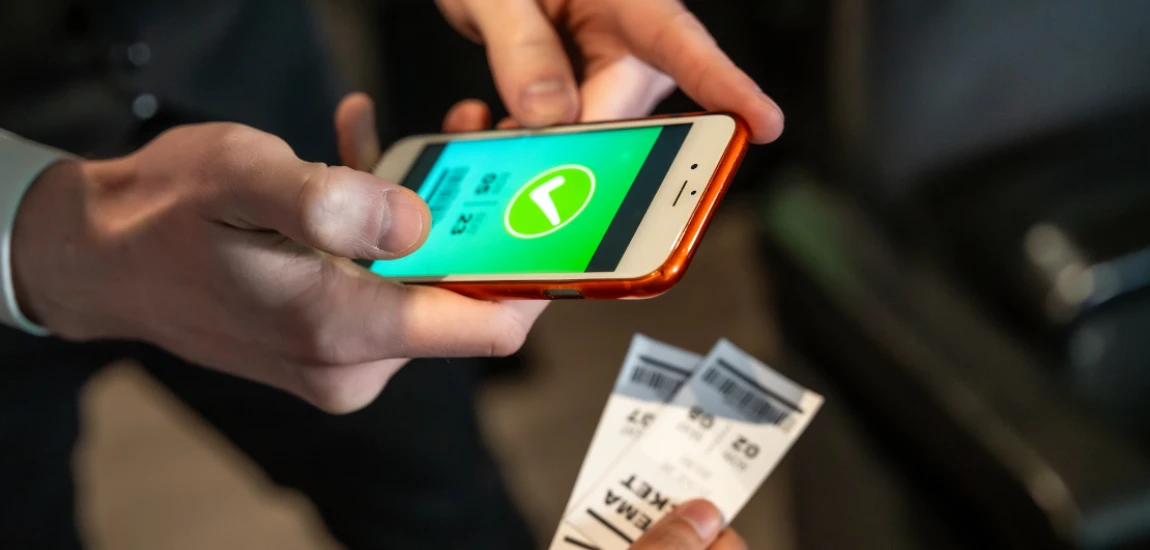From Cinema to Smartphone: How Mobile Viewing Is Changing Scriptwriting in 2025

The shrinking screen and expanding audience
The last decade has seen a remarkable shift in how audiences consume stories. The big screen once ruled supreme, but today, the small screen—particularly the smartphone—dominates. Viewers are no longer bound to the cinema or even their televisions. Instead, they’re streaming episodes, films, and short-form stories while commuting, waiting in line, or lying in bed. This mobility has redefined not only where and when people watch but also how stories must be told.
The end of traditional screen hierarchy
Previously, scriptwriters structured their stories around the cinematic experience—a large screen with immersive visuals and a captive audience. Now, the smartphone has upended this hierarchy. The vertical frame, shorter attention spans, and the multitasking nature of mobile viewing all force writers to rethink every line, beat, and shot.
The rise of mobile-first storytelling platforms
From YouTube Shorts and TikTok to Netflix’s mobile-optimized series, the industry is quickly pivoting toward short, punchy, and visually direct storytelling. Writers who understand how to tailor pacing and tone for mobile viewers are leading a creative evolution.
Writing for the Small Screen: Adapting Visual Language

Close-ups as emotional anchors
In mobile viewing, the grand cinematic panorama loses its power. What truly connects is the human face—the close-up. Micro-expressions, glances, and subtle gestures become central storytelling tools. Writers are increasingly scripting visual beats that emphasize proximity and intimacy rather than scale.
Visual simplicity and clarity
Screenwriters must now consider readability. On a phone, cluttered visuals or dense action lines can overwhelm the viewer. Descriptions that once took three lines now condense into sharp, minimalist cues that direct attention where it matters most. Every visual detail must justify its presence.
Writing for vertical composition
The vertical frame of mobile platforms introduces new creative constraints. Writers and directors collaborate to craft scenes that utilize height and intimacy, emphasizing body language and motion within a confined visual plane. It’s not just a matter of cropping—it’s a reimagining of cinematic language itself.
The Evolution of Structure: Shorter Acts and Faster Pacing

Micro-narratives and condensed beats
Traditional three-act structures are being broken into micro-narratives. Mobile audiences engage in shorter sessions, so stories must deliver satisfaction quickly while maintaining continuity. Each “beat” becomes a miniature story—self-contained yet interconnected.
The rise of episodic scripting
Writers now design scripts with “pause points” that accommodate interruptions. A five-minute episode or scene might serve as both a standalone unit and part of a larger arc. The pacing mirrors how audiences swipe through their feeds—quick, engaging, and rhythmic.
Retaining emotional resonance amid brevity
The challenge lies in maintaining depth. Fast doesn’t have to mean shallow. The most successful mobile-first scripts use concise dialogue, emotionally charged visuals, and thematic consistency to achieve resonance without sprawling exposition.
Dialogue in Motion: How Writing Speech Changes on Mobile

Brevity is emotional precision
On mobile, audiences read subtitles or listen through earbuds, often in noisy environments. That means dialogue must be concise, rhythmic, and impactful. Every line should advance character, emotion, or plot with zero filler.
Visualized communication
Scripts increasingly integrate texting, voice notes, and social media exchanges as part of dialogue. Writers must structure these elements dynamically, ensuring they feel organic while remaining visually clear on a small screen.
Sound and silence as dialogue
The mobile soundscape values silence as much as speech. In tight auditory spaces, pauses and ambient noise can speak volumes. Writers who script intentional silence harness the same emotional weight that once belonged to long monologues.
Attention Economics: Writing for Split Focus

Capturing attention in seconds
In a mobile world full of notifications, you have about three seconds to hook your viewer. Openings must start in medias res—mid-action, mid-conflict, mid-emotion. Writers no longer have the luxury of slow exposition.
Strategic repetition and visual rhythm
Since viewers might glance away and return, scripts increasingly use repetition—echoing motifs, recurring symbols, or rhythmic dialogue—to re-anchor attention. These patterns build subconscious retention even when focus lapses.
Designing moments of pause
Counterintuitively, mobile stories also need built-in moments of stillness. A pause—a breath, a look, a fade—offers micro-recovery time, preventing fatigue from rapid pacing. Writers can script these intentionally to sustain engagement.
The New Grammar of Visual Storytelling

Compression as creative constraint
Just as poets thrive on form, screenwriters now treat compression as opportunity. By condensing visuals and dialogue, they create stories that feel distilled and potent. Mobile-first storytelling encourages innovation within limitation.
Fragmentation as narrative style
Scenes may no longer follow linear flow. Mobile viewing embraces montage and jump cuts as natural rhythms. Writers employ fragmented narrative sequences that align with how users swipe through content—a rhythm of discovery, not continuity.
Reimagining transitions
Traditional fade-outs and dissolves are replaced by swipes, quick cuts, or vertical pans. Writers describe transitions that mimic app behavior, merging cinematic and digital logic.
Character Development in a Compact Frame

Revealing character through gesture
Without the luxury of extended dialogue, characters reveal themselves through small, observable actions—how they type a message, how they hesitate before answering a call. These micro-actions replace pages of exposition.
Emotional layering in minimal time
Mobile audiences form connections fast. Writers must craft instantly recognizable emotional cues—expressions, tone shifts, and situational context that immediately tell us who someone is.
Story arcs through accumulation
Instead of one grand epiphany, character growth unfolds through accumulating micro-moments. Each short scene adds a brushstroke to a psychological portrait.
Sound Design and the Script: Writing for Earbuds

Sound as storytelling texture
With most mobile viewers using headphones, sound becomes intimate. Writers can script ambient layers—whispers, environmental hums, or distant echoes—that draw the listener deeper into the scene.
The role of silence and absence
In a noisy world, silence becomes powerful. Scripts that allow moments of sonic emptiness give emotional space for reflection and tension.
Writing music cues strategically
Music cues now serve as scene glue. Because many mobile scenes are shorter, transitions between mood and tone rely on quick, memorable auditory shifts rather than long orchestral builds.
Interactive and Cross-Platform Scriptwriting

Writing for participatory media
Mobile storytelling doesn’t stop at watching. Some audiences interact through comments, votes, or alternate endings. Writers must anticipate audience engagement and script for flexibility.
Integrating multiple mediums
Modern scripts may include layers—chat screens, AR overlays, live polls. Writers increasingly blend fiction with digital realism, blurring the line between story and interface.
Gamified storytelling
Game mechanics—choices, challenges, rewards—are entering screenwriting. Writers explore branching narratives where the story adapts based on user input, creating deeply personal experiences.
The Future of Scriptwriting in a Mobile-First World

AI-assisted creativity
AI tools are beginning to analyze viewer data and suggest script edits that optimize pacing for mobile engagement. This doesn’t replace human creativity but enhances it with predictive insight.
Global storytelling across devices
Smartphones have democratized filmmaking. A script written in Lagos or Lahore can reach audiences in London or Los Angeles instantly. Writers are learning to create universally resonant, culturally hybrid stories.
The return of intimacy
In some ways, mobile viewing brings storytelling full circle. Before cinema, stories were shared face-to-face, close-up and personal. The smartphone, for all its technology, recreates that intimacy. Writers who understand this will thrive in 2025 and beyond.




